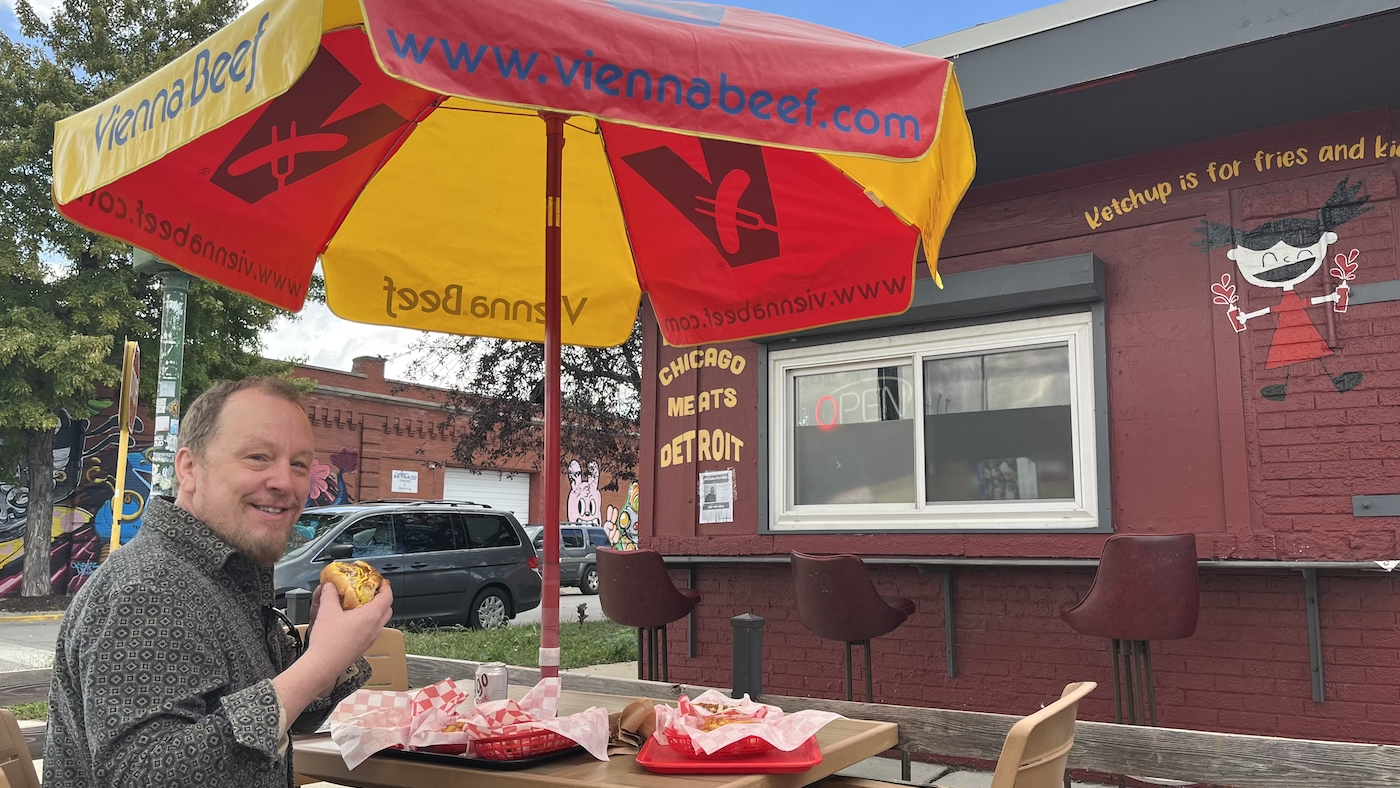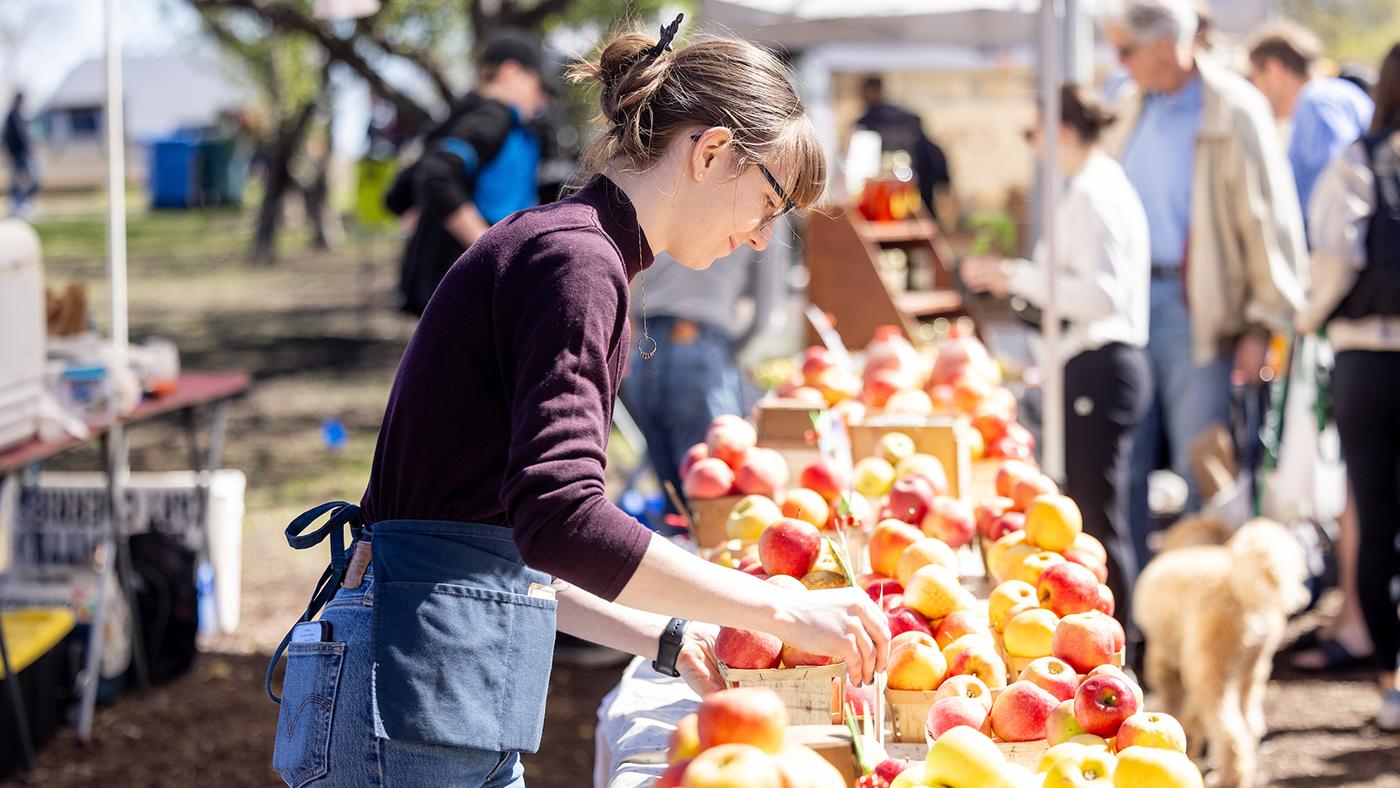New Cookbook Argues Midwestern Food is More than Casseroles and Cheese. But Here's a Recipe for Fried Cheese Curds Anyway
Daniel Hautzinger
September 21, 2023

Get more recipes, food news, and stories by signing up for our Deep Dish newsletter.
If you have enjoyed a sandwich of raw ground beef with onion and butter on rye bread called a cannibal or wildcat at the holidays, you’re probably from Wisconsin. Got a handle on goetta, the boudin-like sausage of offal and oats? Perhaps you’ve lived in Cincinnati. Kansans and Nebraskans may have delighted in the beef-, cabbage-, and onion-stuffed rolls known as runzas or bierocks.
All of these dishes are prime examples of the unique specialties that define parts of the Midwest but are little-known outside their region. But Midwestern food encompasses much more than these German-rooted, meat-and-grain-heavy foods, as Paul Fehribach, the chef and owner of Big Jones in Andersonville, shows in his new book Midwestern Food: A Chef’s Guide to the Surprising History of a Great American Cuisine, with More Than 100 Tasty Recipes.
Take pizza—obviously an Italian food, but it “evolved here in a novel way,” Fehribach points out. “A pizza like you can find at Lou Malnati’s”—not to mention St. Louis style, Detroit style, or tavern style—“doesn’t exist in Italy. It literally is from the Midwest.”
Or the pan dulce that Fehribach craved whenever he visited his grandmother in Detroit and got to choose a treat from the Mexican bakery La Gloria Panaderia. Although her heritage was “Ulster Appalachian and Florida bush,” Fehribach writes, she also baked the most popular form of pan dulce, called conchas, at home for her Mexican husband, a recipe that Fehribach includes in his book. The Mexican immigrants who started coming to the Midwest more than a century ago for industrial jobs brought pan dulce with them, and it is now well-integrated into the foodways of the Midwest, especially in cities like Chicago and Detroit.
Same with the tamale. By 1892, an entrepreneur named Robert Putnam employed five hundred people to sell his California Chicken Tamales in Chicago. Decades later, African Americans from the Mississippi Delta would bring their own twist on the tamale, the boiled, less doughy, cornmeal-based Delta tamale that is now the focus of a whole Chicago restaurant, Wicker Park’s The Delta. And then industry got involved and Chicago invented its own tamale, the tubular, machine-extruded version sold in cans.
For better or worse, industrial food is one of the important ways the Midwest has impacted the way America eats, from meatpackers in Chicago to breweries in Milwaukee, St. Louis, and Cincinnati. Fast food began here, with White Castle from Kansas, Wendy’s from Ohio, Domino’s from Michigan, Papa John’s from Indiana, and the fine-tuning of California’s McDonald’s in Des Plaines. Heinz, Smucker’s, Swan’s Down, Kraft, Miller, Tyson—the list of large food companies started here goes on.
But Fehribach dispels dismissive notions of the Midwest as a land of just meat and potatoes, processed foods, and casseroles (although he does include recipes for some, like the Thanksgiving staple green bean casserole or a Native American twist on hotdish.) “We are unique among American regions because we have both a strong farmhouse tradition and a strong industrial base,” he writes.
Just look at the variety of pickled produce Fehribach includes in Midwestern Food, or the fruits that enliven the desserts: quince, cranberry, rhubarb, fig, blackberry, cherry, pawpaw, persimmon. His own grandparents and aunt and uncle farmed in southwestern Indiana, where he grew up, pickling and preserving produce, hosting pig roasts, and making wild cherry and blackberry wine in a whiskey barrel—a recipe from Fehribach’s grandfather that he includes, without the whiskey barrel and starting from a more reasonable six pounds of fruit instead of 75.
Recipes like that, and most others in the book, are presented mostly unaltered by Fehribach’s “culinary inclinations.” He wanted to “document the culture,” showing the recipes in their original form as made by a family member, documented in a newspaper, or collected in a community cookbook. While the cookbook is approachable and not a scholarly book, it is published by The University of Chicago Press and contains an extensive bibliography and endnotes.
Fehribach’s first cookbook focused on the regional Southern food he serves at his restaurant Big Jones. When he started studying Southern cuisine more closely and traveled around the South, he found he admired how every town had a “little cafe” that had been making the same food in the same way for 50 years.
“When I started coming home from these trips to the South, I started realizing that we had all of these same things that I had admired about the South. We had local cafes that had been there for eighty years, a hundred years, and we had local foods that had been made by the same company for generations,” he says. “So I started to think, why is Midwestern food always cast in this derogatory way like Southern food used to be?”
The Midwest has been an industrial food producer, meat processing center, beer brewer, and the “breadbasket” of the country due to the grain grown and milled here.
“I wanted to present it as something that’s evocative of a people and place that are really important in America,” Fehribach says. “The Midwest has fed the country for most of its existence.”
But the Midwest has also spread recipes across the country through the most popular cookbook in American history, The Joy of Cooking (written in St. Louis and published in Indianapolis); Aunt Babette’s Cook Book; and the fictional Betty Crocker, who was created by the predecessor to General Mills in Minneapolis, a milling center of the country.
“For most of our history, the Midwest has been a place of progressive ideas, culinary innovation, and blending of cultures that made America what it is today,” Fehribach writes. He’s curious to see what combination of influences results in the next hamburger, fried chicken, or hot dog. “It’s probably going to come out of Vietnamese or Thai or Eastern Mediterranean or Persian kitchens putting their take on a Midwestern dish and starting an earthquake,” he says.
He demonstrates in the book that fried chicken was popular in Germany in the eighteenth century, arguing that German immigrants to America brought it with them to America—although enslaved Africans probably picked it up quickly and may have had their own tradition of deep-frying poultry; either way, Black Southern cooks added in spices to the batter. (Fehribach points out several instances in which Black cooks have evolved slightly separate versions of dishes, due to slavery and then segregation, the latter of which still limits many white Midwesterners from knowing some quintessential Midwestern foods, like Chicago barbecue, because it exists mostly on the South Side.)
Hot dogs also evolved out of German food—probably first in the Midwest, Fehribach shows, not in New York as is often claimed. Jewish immigrants in Chicago then started serving all-beef hot dogs as well as baking poppy seed buns, thus leading to the Chicago dog. In Detroit and Cincinnati, Macedonian immigrants added spiced, meaty sauce to their hot dogs to create coney dogs, Fehribach’s first regional hot dog obsession, enjoyed on his trips to his grandma in Detroit. (Lola’s Coney Island in Humboldt Park serves a Detroit-style coney dog of which Fehribach approves, as he revealed on a recent visit there.)
“Even as handheld food may seem less than cuisine-y to some, the reality is that as an embodiment of culture, foods like tamales and hot dogs are significant markers of identity and sense of place, arguably the very definition of ‘cuisine,’” he writes.
That’s Fehribach’s goal: to argue that Midwestern food, so often scoffed at or ignored, is a legitimate and valuable cuisine. “What I would like to do is present it as a beautiful regional cuisine that has a history, that has roots and is reflective of its place, and that hopefully will inspire people to have a serious conversation about it.”
Here's a recipe for fried cheese curds from Midwestern Food to snack on while you have that serious conversation.
Fried Cheese Curds
Ingredients
1 lb cheese curds, separated into individual curds
1 1/2 cups dry hard cider or light lager beer (cider is best, but beer's no slouch)
1 cup all-purpose flour, plus more for prepping the curds
1/4 cup cornstarch
1 tsp baking powder
1 tsp kosher salt
1/4 tsp cayenne pepper
Beef tallow or vegetable oil for deep-frying
Directions
1. Place the cheese curds in the freezer for 10 minutes while you heat the fat or oil and prepare the batter. Heat 2 inches of fat or oil in a dutch over or countertop fryer to 350°F.
2. In a medium mixing bowl, combine the cider or beer, flour, cornstarch, baking powder, salt, and cayenne pepper. Whisk until smooth, but don't overmix.
3. Remove the curds from the freezer and dust with 1 to 2 tbsps of flour, just to lightly coat, then plunge them, a large spoonful at a time, into the batter. Use a large slotted spoon to transfer them to the hot oil, dropping them in quickly but one at a time so they don't clump. Fry in 2 or 3 batches, about 6 minutes each, until golden brown and delicious. Drain on wire racks or paper towels and serve hot with ranch dressing.







